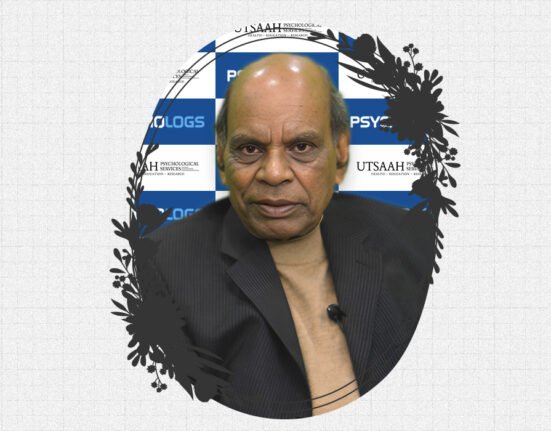Many people in the Millennial and Gen Z generations are prioritising physical activity and consuming more products and services of the wellness industry. From gym membership to skin care products, individuals are spending their expenses on items that support wellness.
Wellness Spending Increases Despite Economic Slowdown
While interest in mental health and self-care has increased, the production and consumption of services and goods that support well-being have also risen. Millennial and Gen Z consumers are spending a great deal on healthy choices and wellness activities, including fitness programs, physical exercise, sports, healthy food and drinks, and even skin care products like facemasks, creams, red-light therapy, etc.
Analysts at Bank of America observed that spending on self-care is increasing due to a change in priorities among generations, and this is helping the related health and wellness industries rise, in spite of a downturn in general consumer spending. The Global Wellness Institute recorded the sector at a worth of $6.32 trillion in 2023, outpacing pharmaceuticals and sports industries. Business Insiders (Sor, 2025) also noted the wellness industry to be the least affected by economic recession (Davis, 2025).
Shift in Priorities: From Bars to Wellness Clubs
Unlike previous generations who spent on entertainment in bars and clubs, today’s young adults are investing in health and wellness routines. For many Gen Z and Millennial consumers, their time revolves around workouts in the gym or even yoga sessions, cafes, etc, instead of bars. This shift reflects a broad lifestyle change, where once happiness was found while partying and clubbing, many now are finding joy in taking care of themselves by opting for healthier choices like walking, eating healthy, maintaining skincare routines, meditating and simply focusing on themselves.
According to Psychologist Farhana Nazneen, very recently, it has been observed that fitness has become a major topic amongst Gen Z and millennials. It is seen that fitness activities actually allow individuals to take charge of their health and help in boosting self-efficacy and their confidence. It helps in reducing stress, a kind of mood enhancer and helps in managing anxiety and depression.
Giving importance tồ fitness also helps ỉn emotional regulation and develops a sense of direction. Many people are focused on positive body image. Due to sedentary lifestyles, people have become more concerned about health and therefore focus more on exercising to reduce high-risk diseases. It is also seen among Gen Zs to flaunt their fitness achievements on social media for enjoyment and social recognition. It reduces cortisol levels and releases endorphins and helps them ỉn enhancing mood and self-acceptance.
Why This Shift in New Generations: The Psychology Behind the Wellness Boom
Younger members of society are concerned about wellness for both physical and emotional needs. Rising urbanisation has induced an increase in anxiety, mood disorders, substance abuse and other similar conditions (Prakash et al., 2023). Work often adds to this stress, and people find themselves losing a sense of control due to job demands. Academic pressure and other challenges. Additionally, being on social media constantly can also increase anxiety and other disorders (Nakshine et al., 2022).
Individuals find that engaging in fitness courses, visiting therapists or setting up healthy habits helps them regain the sense of control and build strength to handle stressful situations. Furthermore, this generation lived through the pandemic, which increased the worry about mental health as most were working remotely and did not have access to outdoor spaces (Choudhary & Qadir, 2021). There was a stark increase in the health and wellness sector after the pandemic.
Is Wellness Becoming a Luxury?
Is mental health decline the only factor that is fueling the success of the wellness sector? The answer is no. While mental health is a genuine concern, many individuals also view wellness as a trend or a luxury. Social media also promotes a false image of healthy living by showing self-care as expensive trips, spa visits, gym trends and luxury skin products promoted as spiritual.
Additionally, the wellness industry often exploits commercialisation by selling products like supplements that usually lack any proven benefits for health (Schrank, 2024). These challenges show the need for scientific validation of wellness products and practices (Putrevu & Mertzanis, 2025). Wellness is also considered to be linked to wealth and status, so it has become an important symbol of societal reputation (Soares & Moniz, 2023).
According to Assistant Professor Dr Syed Zafar Sultan Rizvi, the explosive rise of the $6.32 trillion global wellness market, powered largely by Millennials and Gen Z, is more than a lifestyle trend. In my opinion, it reflects a collective coping strategy in response to increasing levels of stress, burnout, and existential uncertainty. These generations aren’t just spending on wellness for vanity or aesthetics—they’re trying to survive in a world that feels increasingly unstable.
Millennials and Gen Z grew up in a time of significant global and personal disruption: climate change, economic recessions, rising student debt, social unrest, and a 24/7 digital culture. A 2023 survey by the American Psychological Association (APA) found that nearly 70% of Gen Z adults report feeling significant stress about the future of the nation, finances, and global conflicts. Similarly, the World Health Organisation has reported alarming rises in anxiety and depression globally, particularly among young people in the post-pandemic era.
In this context, wellness practices—ranging from yoga, mindfulness, and plant-based diets to therapy apps and biohacking—serve as modern coping tools. They offer a semblance of control in a world where many feel powerless. As researcher Emily Witt notes in The New Yorker, wellness culture has evolved into a form of “secular salvation,” promising peace and clarity amid chaos.
Moreover, burnout isn’t just a buzzword—it’s a psychological and physiological condition that’s now recognised by the World Health Organisation as an “occupational phenomenon.” The Deloitte Global 2022 Millennial and Gen Z Survey found that nearly 46% of Gen Z and 38% of Millennials say they feel burned out due to the intensity of their work environments. It’s no surprise that these groups turn to wellness products and services as a way to repair and restore themselves, whether through mental health apps like Calm or Headspace, or through practices like breathwork and digital detoxing.
However, it’s also important to question whether the commodification of wellness is truly helping. Critics argue that the industry often preys on vulnerable emotions, offering high-priced solutions to problems that are deeply systemic. Buying expensive supplements or spa retreats may soothe symptoms, but they rarely address the root causes of anxiety or fatigue. As journalist Rina Raphael argues in her book The Gospel of Wellness, this industry often sells hope more than healing.
Still, I believe the wellness boom reveals something powerful: a generation unwilling to accept burnout as normal. While some aspects of this trend may be commercialised or performative, at its core is a genuine desire for balance, peace, and mental well-being. In a world that feels increasingly unpredictable, the wellness market has become a symbolic and literal refuge—a way to reclaim agency, even if temporarily. In the end, this isn’t just about green smoothies or yoga mats—it’s about survival, self-preservation, and the human need for meaning in turbulent times.
Read More: Why “Fixing Yourself” Might Be a Capitalist Trap
More people are questioning whether the wellness industry genuinely promotes mental health or just makes profits off of it. Other challenges of the wellness industry involve enabling accessibility, so everyone, despite their money and status, can approach the wellness services (Putrevu & Mertzanis, 2025).
In conclusion, the new generations are increasingly concerned and aware of mental health issues and are prioritising their health through services and products offered by the wellness industry. However, one must consider whether these practices really support health or whether they are mostly following popular trends and expectations from society.
FAQs
1. What drives the growth of the wellness industry?
The wellness industry is booming due to increasing awareness of mental health and the impact of social media trends. Additionally, the COVID-19 pandemic has brought further attention to the importance of well-being.
2. What are the main trends within the wellness industry?
The main trends include physical activities, healthy eating, services like spa, massage and other relaxing activities. Additionally, the wellness industry also introduces technology like fitness tracking or hydration and sleep apps.
3. How is technology impacting the wellness industry?
Technology plays a major role in wellness through devices like fitness trackers, digital health apps, etc. These tools provide consumers with support to improve mental health.
4. What are the biggest challenges and opportunities for the wellness industry?
Challenges include the difficulty of accessibility, which involves making products and services available and affordable for all individuals. Additionally, the scientific challenges involved in proving the validity of the products that ensure its help improve mental health.
5. How can I participate in the wellness industry?
You can participate by seeking out resources like mental health professionals and organisations that facilitate relaxing and affordable services. It also involves making good, healthy choices in daily life.
References +
- Choudhary, B., & Qadir, A. (2021). Impact of COVID-19 on wellness and spa industry. International Journal of Spa and Wellness, 1–11. https://doi.org/10.1080/24721735.2021.1986970
- Nakshine, V. S., Thute, P., Khatib, M. N., & Sarkar, B. (2022). Increased Screen Time as a Cause of Declining Physical, Psychological Health, and Sleep Patterns: A Literary Review. Cureus, 14(10). https://doi.org/10.7759/cureus.30051
- Prakash, J., Ali, T., Chaudhury, S., & Srivastava, K. (2023). Declining mental health: An aftermath of fast-paced urbanization. Industrial Psychiatry Journal, 32(2), 199–201. https://doi.org/10.4103/ipj.ipj_299_23
- Putrevu, Dr. J., & Mertzanis, C. (2025). The Rise of the Wellness Business Sector: A Systematic Literature Review. SSRN Electronic Journal. https://doi.org/10.2139/ssrn.5190935
- Schrank, S. (2024). The Trouble with Wellness. Race and Yoga, 8(1). https://doi.org/10.5070/r38163923
- Soares, L., & Moniz, S. (2023). Overconsumption and the Effects on Mental Health and Well Being: A Review. Current Research in Diabetes & Obesity Journal, 17(2). https://doi.org/10.19080/CRDOJ.2023.17.555957













Leave feedback about this